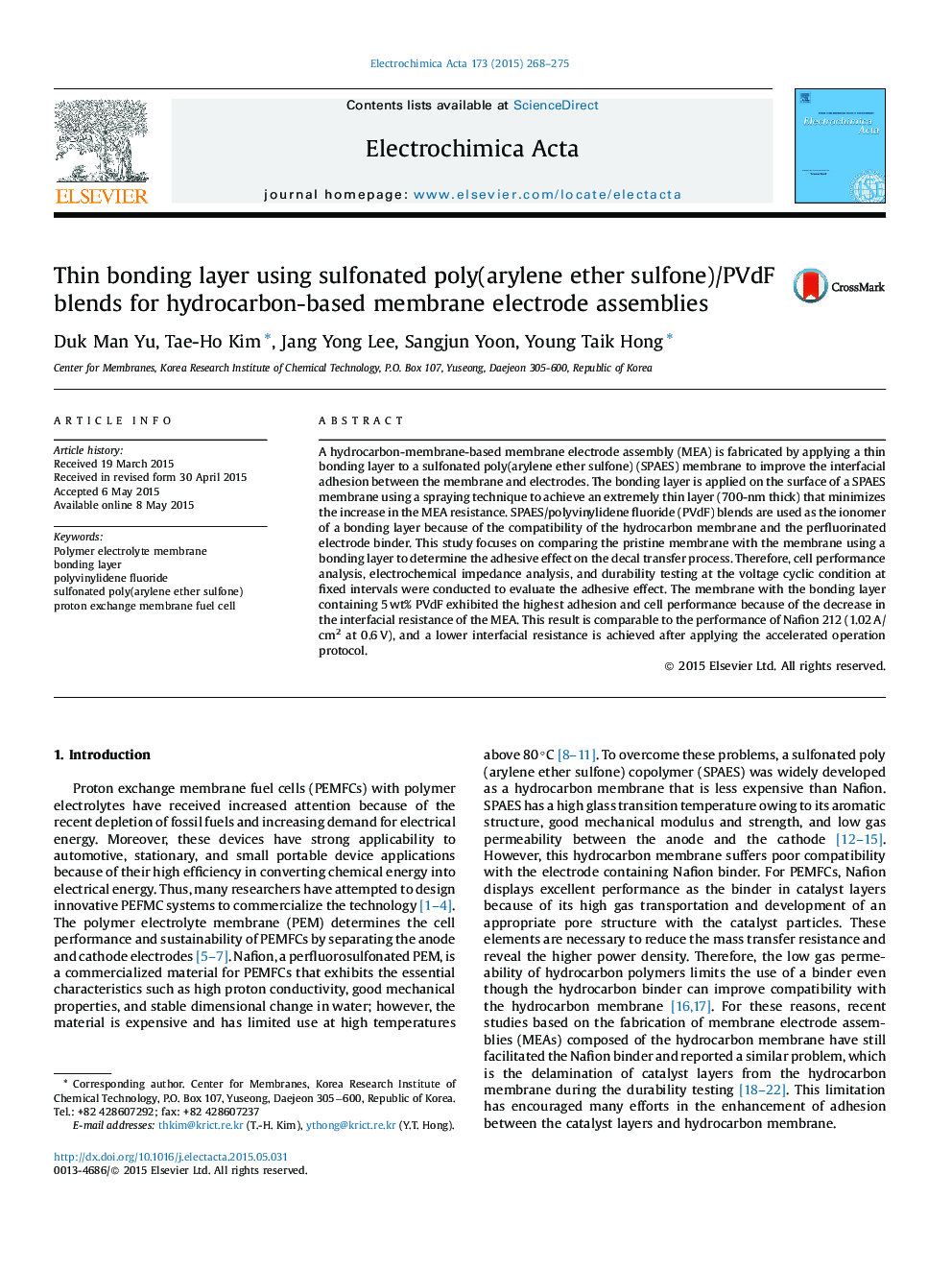| Article ID | Journal | Published Year | Pages | File Type |
|---|---|---|---|---|
| 183784 | Electrochimica Acta | 2015 | 8 Pages |
A hydrocarbon-membrane-based membrane electrode assembly (MEA) is fabricated by applying a thin bonding layer to a sulfonated poly(arylene ether sulfone) (SPAES) membrane to improve the interfacial adhesion between the membrane and electrodes. The bonding layer is applied on the surface of a SPAES membrane using a spraying technique to achieve an extremely thin layer (700-nm thick) that minimizes the increase in the MEA resistance. SPAES/polyvinylidene fluoride (PVdF) blends are used as the ionomer of a bonding layer because of the compatibility of the hydrocarbon membrane and the perfluorinated electrode binder. This study focuses on comparing the pristine membrane with the membrane using a bonding layer to determine the adhesive effect on the decal transfer process. Therefore, cell performance analysis, electrochemical impedance analysis, and durability testing at the voltage cyclic condition at fixed intervals were conducted to evaluate the adhesive effect. The membrane with the bonding layer containing 5 wt% PVdF exhibited the highest adhesion and cell performance because of the decrease in the interfacial resistance of the MEA. This result is comparable to the performance of Nafion 212 (1.02 A/cm2 at 0.6 V), and a lower interfacial resistance is achieved after applying the accelerated operation protocol.
